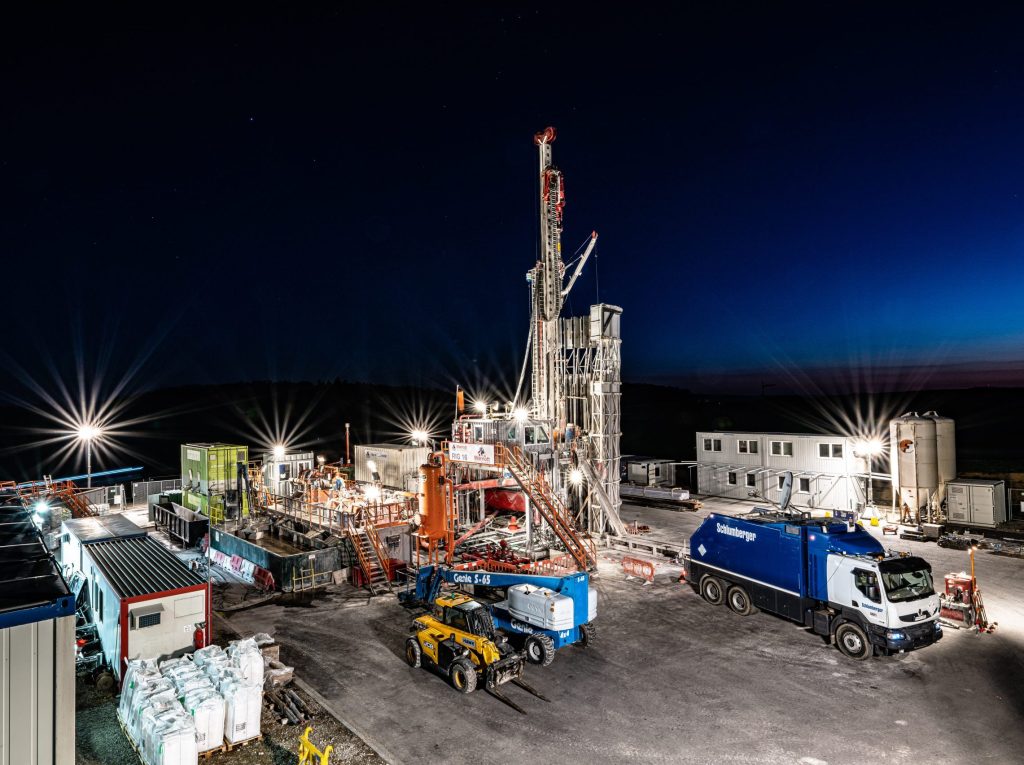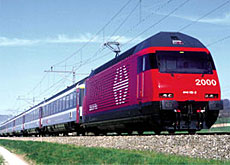Railway revolution hits Switzerland

Switzerland’s railways have undergone their biggest shake-up in years, with the opening of a new stretch of line which cuts journey times considerably.
The new winter timetable, which came into force on Sunday, sees faster and more frequent services across an expanded network.
Rail passengers will need to study the new timetable closely since 90 per cent of train departure times have changed. Such major modifications have not been made for years.
The backbone of rail improvements is a new 45-kilometre stretch running from Mattstetten north of the capital, Bern, to Rothrist near Olten.
“It’s very revolutionary for Swiss standards… It’s rather different from all the other Swiss railway lines where you have a station every three to four kilometres,” Swiss Federal Railways spokesman Christoph Kräuchi told swissinfo.
“Here you go you almost 50 kilometres without a railway station,” he added.
Significant impact
The line will have a significant impact on shortening journey times across the country, because trains will eventually be able to travel at speeds of up to 200 kilometres per hour.
For example, from December 12, the journey time between the cities of Bern and Zurich was cut from the present 69 minutes to just under an hour.
The Bern to Basel journey time has been reduced from 67 to 55 minutes, and there are InterCity trains running at half-hour intervals, instead of every hour as before.
Thirteen minutes has been shaved off the Geneva to Zurich route, and 14 minutes between Bern and Chiasso in the southern canton of Ticino.
“A great many Swiss travellers will benefit,” said Kräuchi.
The new line, coupled with continuing improvements to rolling stock and a denser timetable, are part of the Rail 2000 project, which Swiss voters approved in a referendum in 1987.
Rail 2000 is intended to attract new customers in Switzerland to public transport.
More, more, more
In a nutshell, the aim of the plan has been to make trains more frequent, faster, more direct and more comfortable.
The line that makes all the difference follows the Bern-Zurich motorway for about a third of its length, while another third passes through tunnels.
It has been designed with both passenger traffic and freight in mind, unlike in France where the high-speed train lines are exclusively for passenger trains.
“We’ve also done a lot for the environment. For example, there are three crossings for wild animals so that they can go from one side of a wood to the other,” explained Kräuchi.
“We’ve also done a lot of prevention work, so that none of the ground water along the track is polluted,” he added.
The Federal Railways has been forced to install signalling along the new track, although it had wanted to introduce the new European Train Control System (ETCS), which features a display in the locomotive cab in front of the driver.
But industry has not been able to supply the ETCS equipment on time. As a result, for the first two years, trains will be limited to a maximum speed of 160kmh.
Strain on staff
While the winter timetable means changes for travellers, it also puts a strain on the staff of the Swiss Federal Railways.
“It’s a completely new train schedule. It doesn’t just affect staff responsible for the signals – it’s also new to our drivers, to our staff in trains and to those selling tickets, because people will be asking questions.”
“All 24,000 employees of the Federal Railways will have a big challenge coming up on December 12,” said Kräuchi.
To try to make sure that the big day goes by without any great hiccups, a lot of internal training has been taking place and there are back-up systems if a train fails on the new line.
“We’ve already practised how long it would take to get that train out… and we have emergency procedures as well,” explained Kräuchi.
“But the best thing to do is to see that the tracks and the trains are in good shape and don’t break down. If that’s the case, everything should go well.”
Punctuality
The Federal Railways is going to have to be strict when it comes to punctuality. If a train is more than three minutes late under the new timetable, connecting trains will not wait.
“If trains run more than three minutes late, the system becomes unstable and we can’t risk that,” said Kräuchi.
The new rail offer in Switzerland does, however, have one drawback: rail fares will go up for most journeys. But CEO Benedikt Weibel argues that prices have not increased for two and a half years.
And they can be explained, he says, by the “massive extension” of what is on offer. Ordinary single fares will go up by an average of 1.6 per cent.
Disabled people will not be affected by the new price round, and there is good news for dogs: a second-class season ticket for canines remains unchanged at SFr650 ($542.70).
swissinfo, Robert Brookes
There are 12% more trains running on the rail network.
Travelling times on more than half long-distance journeys have been reduced by at least five minutes.
35% of these journeys have seen their running times reduced by at least 15 minutes.
Rail 2000 has involved more than 130 infrastructure projects around the country.
Total investment in Rail 2000 amounts to SFr5.9 billion ($4.93 billion)
The new Mattstetten-Rothrist line cost SFr1.68 billion.
Swiss transport policy aims to transfer freight traffic off the roads and motorways onto the railways – largely for ecological reasons.
Apart from the construction of two new Alpine base tunnels at the Gotthard and Lötschberg, a package of improvement includes connection to the European high-speed network, noise reduction measures and the Rail 2000 concept.
Public transport companies (train, bus, tram, ship and special railways) in Switzerland employ just under 60,000 people and transport about 1.7 billion people annually.

In compliance with the JTI standards
More: SWI swissinfo.ch certified by the Journalism Trust Initiative












You can find an overview of ongoing debates with our journalists here . Please join us!
If you want to start a conversation about a topic raised in this article or want to report factual errors, email us at english@swissinfo.ch.